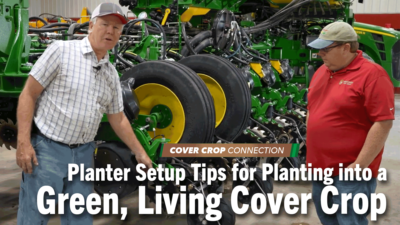Articles Tagged with ''soil health''
[Podcast] Interseeding Ideal for Wide Rows
This week’s podcast, sponsored by Yetter Equipment, features the second of a two-part series featuring Austin Carlson, Soil Health Technician with the South Dakota Soil Health Coalition. In part 2, Carlson discusses when interseeding should occur, interseeding a cover crop mix vs. a single cover crop species, environmental conditions that impact interseeding, and more.
Read More
[Podcast] Follow the Combine with Cover Crop Seeding
This week’s podcast, sponsored by Yetter Equipment, features the first of a two-part series featuring Austin Carlson, Soil Health Technician with the South Dakota Soil Health Coalition. In part 1, Carlson discusses choosing the best cover crop seeding method, finding and calibrating cover crop seeding equipment, choosing the right timing for seeding covers, and more.
Read More



